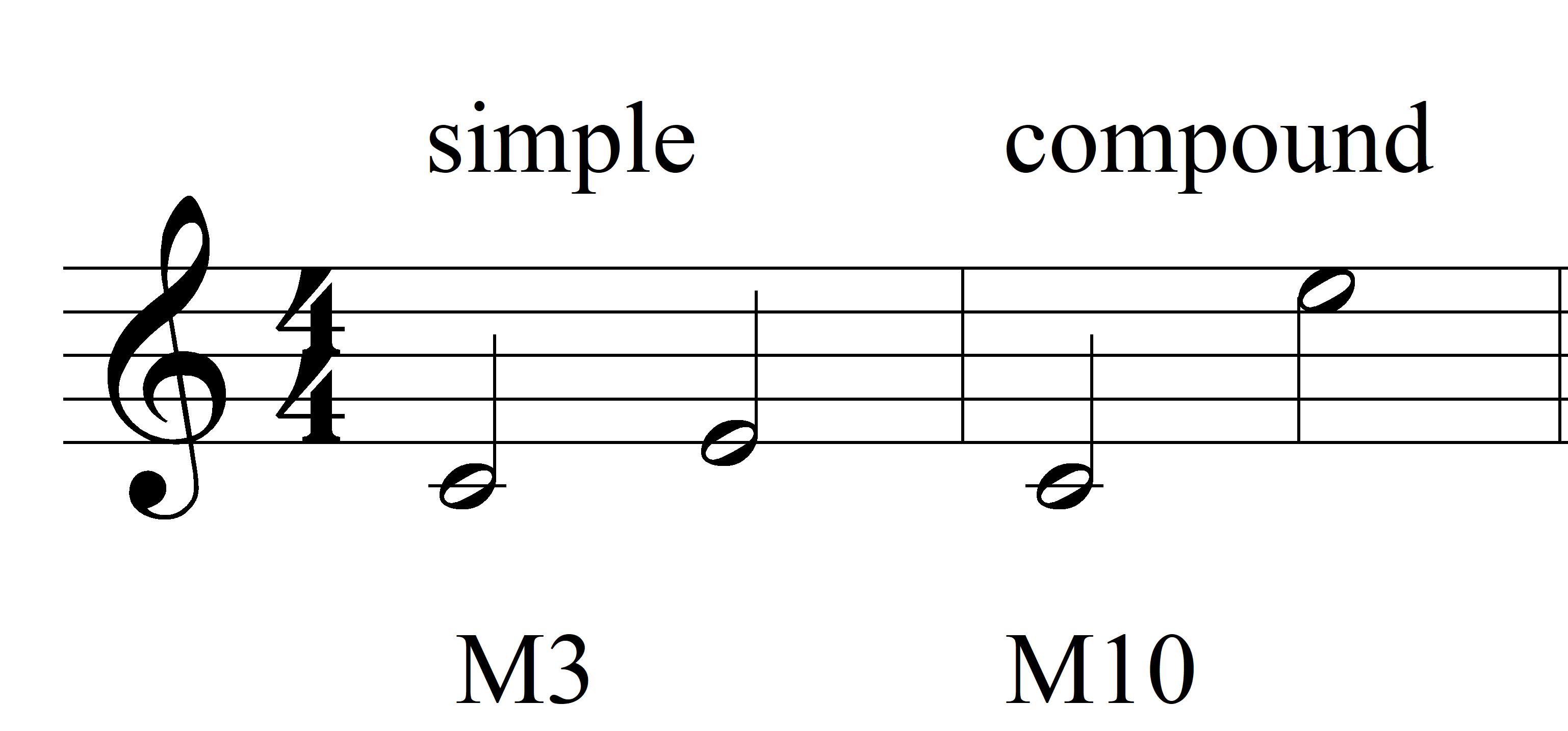Integrated Aural Skills 2019-20
What Are Compound Intervals?
In Aural Skills III, we studied simple intervals. These may be defined as “intervals that span up to, and including, one octave.”
In Aural Skills IV, we will study compound intervals. A compound interval spans more than one octave.
Why? Why?
As we advance in our study of hearing increasingly complicated melodies, chords, and four-part harmonies, we will need compound intervals to explain their analysis and notation.
… But don’t panic…
Compound intervals are not harder to identify and notate than simple intervals. A compound interval such as the minor 14th – which we still spell as sol, fa – also has the characteristic “dominant function” sound that you learned to identify in Aural Skills III.
Analyzing and notating compound intervals is a three-step process.
- Identify the interval as it might appear in simple presentation, i.e. you might hear do and mi, indicating a major 3rd (see the image below).
- Add 7. This gives you a major 10th. Write “M10.”
- Now notate the second pitch in the score, taking care to use the correct octave.
